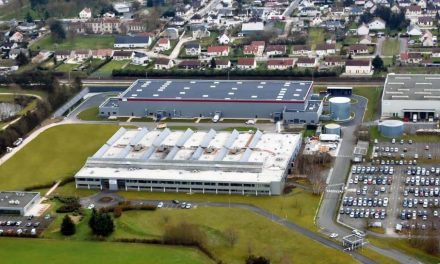Economic Activity in Manufacturing Sector Expanded in February, ISM’s PMI at 54.2%
- New Orders, Production, and Employment Growing
- Supplier Deliveries Slowing at Slower Rate; Backlog Growing
- Raw Materials Inventories Growing; Customers’ Inventories Too Low
- Prices Decreasing; Exports and Imports Growing
(Tempe, Arizona) — Economic activity in the manufacturing sector expanded in February, and the overall economy grew for the 118th consecutive month, say the nation’s supply executives in the latest Manufacturing ISM® Report On Business®.
The report was issued today by Timothy R. Fiore, CPSM, C.P.M., Chair of the Institute for Supply Management® (ISM®) Manufacturing Business Survey Committee: “The February PMI® registered 54.2 percent, a decrease of 2.4 percentage points from the January reading of 56.6 percent. The New Orders Index registered 55.5 percent, a decrease of 2.7 percentage points from the January reading of 58.2 percent. The Production Index registered 54.8 percent, 5.7-percentage point decrease compared to the January reading of 60.5 percent. The Employment Index registered 52.3 percent, a decrease of 3.2 percentage points from the January reading of 55.5 percent. The Supplier Deliveries Index registered 54.9 percent, a 1.3 percentage point decrease from the January reading of 56.2 percent. The Inventories Index registered 53.4 percent, an increase of 0.6 percentage point from the January reading of 52.8 percent. The Prices Index registered 49.4 percent, a 0.2-percentage point decrease from the January reading of 49.6 percent, indicating lower raw materials prices for the second straight month after nearly three years of increases.
“Comments from the panel reflect continued expanding business strength, supported by notable demand and output, although both were softer than the prior month. Demand expansion continued, with the New Orders Index reaching the mid-50s, the Customers’ Inventories Index scoring lower and remaining too low, and the Backlog of Orders returning to a low-50s expansion level. Consumption (production and employment) continued to expand but fell a combined 8.9 points from the previous month’s levels. Inputs — expressed as supplier deliveries, inventories and imports — stabilized at a mid-50s level and had a slight negative impact on the PMI®. Inputs continue to reflect an easing business environment, confirmed by Prices Index contraction.
“Exports continue to expand, at slightly stronger rates compared to January. The manufacturing sector continues to expand, but inputs and prices indicate easing of supply chain constraints,” says Fiore.
Of the 18 manufacturing industries, 16 reported growth in February, in the following order: Printing & Related Support Activities; Textile Mills; Computer & Electronic Products; Electrical Equipment, Appliances & Components; Fabricated Metal Products; Paper Products; Wood Products; Primary Metals; Chemical Products; Food, Beverage & Tobacco Products; Miscellaneous Manufacturing; Petroleum & Coal Products; Transportation Equipment; Machinery; Furniture & Related Products; and Plastics & Rubber Products. The only industry reporting contraction in February is Nonmetallic Mineral Products.
WHAT RESPONDENTS ARE SAYING
- “Strong domestics market. Slow export markets.” (Paper Products)
- “Demand remains healthy at the beginning of 2019. However, growing concerns for what could be another round of tariffs in March are further escalating price increases of already constrained electronic components. Expect to see increased lead times and prices throughout Q1 and Q2.” (Computer & Electronic Products)
- “Strong start to the year, though weather has been a challenge.” (Chemical Products)
- “Still fairly steady with production and services.” (Transportation Equipment)
- “Economy showing general strength, especially in manufacturing. Cost pressures and tariff challenges persist but are manageable. General outlook is for stability and potential improvement in the second half of 2019.” (Food, Beverage & Tobacco Products)
- “Orders remain strong. Supplier delivery continues to be challenged on some commodities.” (Machinery)
- “Aerospace engine-related business continues to be strong. Energy and general industry-related business is flat to down.” (Miscellaneous Manufacturing)
- “Business so far this year is meeting, but not exceeding, our forecast. We are concerned about indicators showing a slight recession for the second half of the calendar year.” (Fabricated Metal Products)
- “Uncertainty of steel prices due to Section 232 tariffs on imported steel and lack of resolution of the anti-dumping trade cases.” (Petroleum & Coal Products)
- “General business conditions started to slow at the end of January, continuing through February.” (Plastics and Rubber Products)
MANUFACTURING AT A GLANCEFebruary 2019 |
||||||
| Index | Series Index
Feb |
Series Index
Jan |
Percentage
Point Change |
Direction | Rate of Change | Trend* (Months) |
PMI® |
54.2 | 56.6 | -2.4 | Growing | Slower | 30 |
| New Orders | 55.5 | 58.2 | -2.7 | Growing | Slower | 38 |
Production |
54.8 | 60.5 | -5.7 | Growing | Slower | 30 |
| Employment | 52.3 | 55.5 | -3.2 | Growing | Slower | 29 |
| Supplier Deliveries | 54.9 | 56.2 | -1.3 | Slowing | Slower | 36 |
| Inventories | 53.4 | 52.8 | +0.6 | Growing | Faster | 14 |
| Customers’ Inventories | 39.0 | 42.8 | -3.8 | Too Low | Faster | 29 |
| Prices | 49.4 | 49.6 | -0.2 | Decreasing | Faster | 2 |
| Backlog of Orders | 52.3 | 50.3 | +2.0 | Growing | Faster | 2 |
| New Export Orders | 52.8 | 51.8 | +1.0 | Growing | Faster | 36 |
| Imports | 55.3 | 53.8 | +1.5 | Growing | Faster | 25 |
| OVERALL ECONOMY | Growing | Slower | 118 | |||
| Manufacturing Sector | Growing | Slower | 30 | |||











